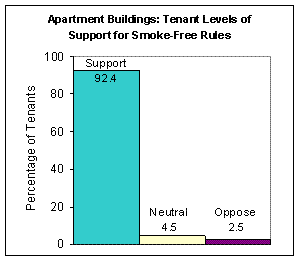 Check out our new toolkit on How to Go Smoke-Free.
Check out our new toolkit on How to Go Smoke-Free.
By making your properties smoke-free, you can:
- save money by reducing the need for repairs
- reduce potential legal liability
- eliminate the leading cause of residential fires
- reduce conflicts among tenants
- eliminate exposure to a Class A carcinogen
How to make your properties smoke-free
No-smoking policies are largely self-enforcing. Once the rule is established, you are likely to attract tenants who want to live in a smoke-free environment. Use the no-smoking lease addendum provided here and having tenants sign when leases come up for renewal or when a new tenant moves in. Make sure to notify tenants of the lease change using the sample letter to residents.
To make implementing and enforcing your no-smoking rule easier:
- post “no smoking” signs. Signs are available at http://www.maclearinghouse.org/.
- clean up cigarette butts and remove ashtrays
- tell tenants why you have a no-smoking rule
- have tenants tell their guests about the no-smoking rule
- respond quickly and consistently to potential violations
- tell tenants that they will be held financially responsible for violating the rule
Read the full text of a report on tenant demand
Use the following tools to help:
Landlord’s Guide (PDF)– complete guide for landlords wanting to make their buildings smoke-free
Letter to Residents (PDF)– sample letter notifying tentants of lease and rule changes
No-smoking in Common Areas Rule Change (PDF)– sample notice of rule change
No-smoking Lease Addendum (PDF)
For more information on the benefits of going smoke-free and how to make your building smoke-free, contact the Massachusetts Smoke-Free Housing Project at (877) 830-8795.
The Massachusetts Smoke-Free Housing Project is an initiative of the Public Health Advocacy Institute and is funded by the Massachusetts Department of Public Health.





